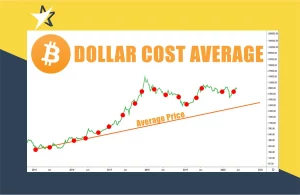Newbie traders often get excited about the futures and options markets due to the promise of high returns. KOL posts about huge profits and advertisements from derivatives exchanges offering 100x leverage are irresistible to most people.
Mistakes to avoid when trading futures
While traders can effectively increase their profits with periodic derivatives, a few mistakes can turn the dream of making “huge” profits into a nightmare and leave them penniless in no time. Even experienced investors in traditional markets have fallen victim to some specific problems in the cryptocurrency market.
Crypto derivatives work similarly to traditional markets because buyers and sellers enter into contracts based on the underlying asset. Contracts cannot be transferred across different exchanges, nor can they be withdrawn.

Most exchanges offer options contracts that are priced in Bitcoin and ETH, so profits or losses will vary depending on the price movements of the asset. Options also provide the right to buy and sell at a later date at a predetermined price. This gives traders the ability to build leverage and hedge strategies.
Convexity can kill your account
The first problem that traders encounter when participating in the cryptocurrency derivatives market is the phenomenon of convexity. In this situation, the value of the margin deposit will change according to the fluctuations of the underlying asset price. More specifically, when the price of Bitcoin tends to increase, the amount of margin that investors are holding will also increase in USD, which creates favorable conditions for using more leverage in trading.
However, the problem will become more serious when the value of BTC suddenly drops. At this time, investors’ margin deposits will also decrease accordingly, causing a lot of trouble. Traders often fall into a state of over-excitement when trading futures contracts, and the positive factors from the increase in BTC price will make them careless, reducing their level of leverage control. Therefore, traders need to be very careful and should not rush to expand their positions just because they see the value of their margin deposits increasing rapidly.
Separate margins bring benefits but also many risks
Derivatives exchanges require users to transfer funds from their regular spot wallets to the futures market, and some will offer separate margin for perpetual and monthly contracts. Traders can choose between cross-collateralization (meaning the same deposit serves multiple positions) or separate.
Each option has its own benefits, but novice traders often get confused and liquidated due to improper margin management. Separate margin, on the other hand, is more flexible in supporting risk, but requires additional maneuvering measures to prevent excessive liquidation. To solve this problem, cross margin must always be used and stop loss orders must be entered manually for each trade.

Not all options markets are liquid.
Another common mistake that many investors often make is entering into trades in the options market with low liquidity. Making trades with illiquid options contracts will result in higher costs for opening and closing positions, along with the hidden costs that options contracts have incurred due to the high volatility of the cryptocurrency market.
Options traders need to ensure that their open interest (OI) is at least 50 times the number of contracts they intend to trade. OI represents the total number of unfilled contracts, with strike prices and expiration dates, that have been traded, so determining it correctly is crucial to trading decisions.
Understanding the potential volatility in the market can be a big benefit for traders, helping them make more informed decisions about the current price of an option contract as well as the likely future changes. It is important to note that as implied volatility increases, the option spread will also increase, which can affect your trading strategy. The best strategy is to avoid buying and selling orders with high volatility.
In short, it takes time to master derivatives trading, so traders should start small and test each function and market before placing big bets.






